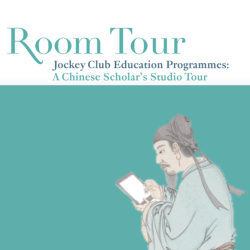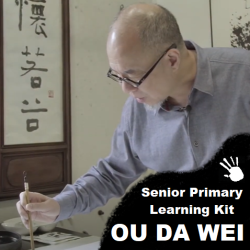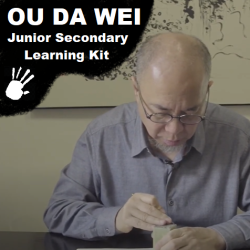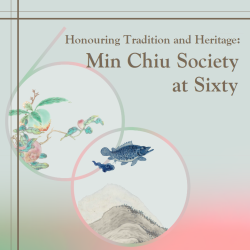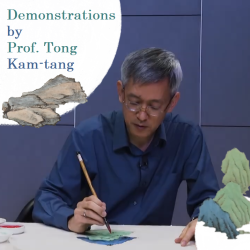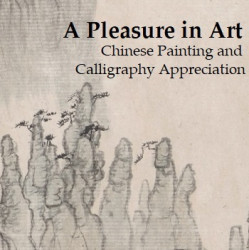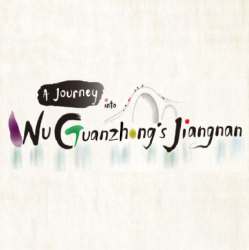Hong Kong Museum of Art
Established in 1962, Hong Kong Museum of Art (HKMoA) is the first public museum in the city, now custodian of an art collection of over 18,800 items, representing the unique cultural legacy of Hong Kong's connection across the globe. By curating a wide world of contrasts, from old to new, Chinese to Western, local to international, with a Hong Kong viewpoint, we aspire to refreshing ways of looking at tradition and making art relevant to everyone, creating new experiences and understanding.
Hong Kong Museum of Art's collections
Wu Guanzhong Sketching from Nature
<p style="text-align: justify;">"My experiences of beauty stem from everyday life. This is what I have been continuously seeking wherever I travelled over the past years. I have been staying true to my feelings and emotions which were nurtured by my native soil, therefore the beauty I sought often emanates a scent of soil and nature." ──Wu Guanzhong<br><br>Sketching in nature has been one of the main sources where Wu Guanzhong got inspiration for his art creation throughout the 60 years of his artistic career. This exhibition showcases around 30 paintings and sketches of Wu Guanzhong and present to the audience the artistic theories that he realised during the process of sketching, and also the development of his paintings from sketches.</p>
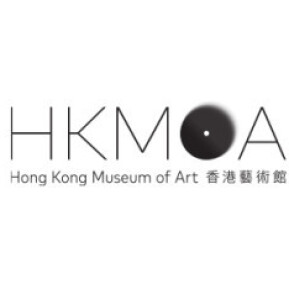 Hong Kong Museum of Art
Hong Kong Museum of Art
13
Little Heads · Big Discovery
<p style="text-align: justify;">Art is an important life experience during child development. According to psychologist Howard Gardner, art education can open up multiple intelligences in children and lay solid groundwork for holistic development.</p>
<p style="text-align: justify;">"Little Heads · Big Discovery" is a series of parent-child art enlightenment resources for children aged 2 - 6. Parents and children are invited to enter the vibrant and multifarious world of art through entertaining ways of learning from these alphabet cards and resources. Children could explore artworks of various times, styles and materials in the museum collections. This unique set of resources also cultivates concentration, aesthetic judgment, exploration, comprehension and expression, all important building blocks of multiple intelligences for the little brains. Indeed, all are welcome to try this novel art journey and experience diverse art from a whole new angle.</p>
 Hong Kong Museum of Art
Hong Kong Museum of Art
5
Jockey Club Education Programmes: A Chinese Scholar's Studio Tour
<p style="text-align: justify;">These 4 animations of “Jockey Club Education Programmes: A Chinese Scholar's Studio Tour” Online Resources inspire audiences to expand imagination and appreciation of Chinese landscape painting, ceramics, jade-carving and sericulture from a whole new perspective.</p>
 Hong Kong Museum of Art
Hong Kong Museum of Art
4
Demonstrations by Prof. Tong Kam-tang
<p style="text-align: justify;">The Hong Kong Museum of Art invited Prof. Tong Kam-tang to produce demonstration videos on ink, colour and texture strokes commonly used in Chinese landscape paintings for the “Mastering Masterpieces: The Essentials of Chinese Landscape Paintings” exhibition.</p>
 Hong Kong Museum of Art
Hong Kong Museum of Art
2
Beyond Seeing: A Multisensory Art Project
<p style="text-align: justify;">In collaboration with the Beyond Vision Projects, the Hong Kong Museum of Art has launched the “Beyond Seeing: A Multisensory Art Project” since September 2021, delivering a series of on-site and outreach accessible art experiences for people with visual impairment and low vision. Through different forms of sensorial engagements, the project offers them a brand new experience in exploring the world of art.</p>
<p style="text-align: justify;">The project comprises a sequence of exhibition guide booklets with Braille, tactile graphics are specially designed for the selected exhibitions.</p>
 Hong Kong Museum of Art
Hong Kong Museum of Art
12
Avowal through Withdrawal: Selected Paintings and Calligraphies from the Chih Lo Lou Collection
<p style="text-align: justify;">Appreciating Chinese painting and calligraphy can be a frustratingly clueless task. Luckily, Tang Hou, a Yuan connoisseur, offered to help with this advice: "In the case of landscapes or paintings of bamboo, plum blossoms, orchids, old trees, rocks, birds and flowers, they are ink-plays in which the initiated and cultured lodge their thoughts and feelings. Pray not to gauge them for formal likeness." In other words, if you are looking only for formal likeness, you are looking in the wrong direction. What is more, when you look at the brush and ink, you look at the artist. Withdrawal means attaining an ideal realm of existence while avowal, proclaiming one's conviction unequivocally. The proclamation, however, requires neither sound nor words when the medium is painting or calligraphy. When appreciating these works, it is the sincerity and integrity embodied that we should look for.</p>
<p style="text-align: justify;">To showcase the manifestation of literati integrity in painting and calligraphy, 60 masterpieces have been selected from the Chih Lo Lou Collection and other Museum holdings for display with reference to their subjects, techniques and the artists' style names and courtesy names.</p>
 Hong Kong Museum of Art
Hong Kong Museum of Art
1



